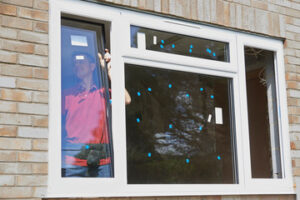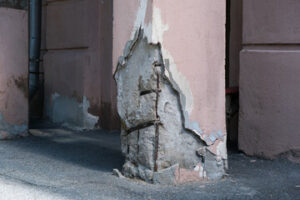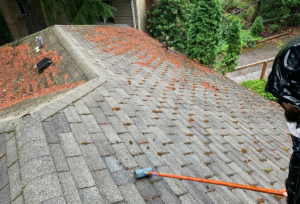If a tree has become structurally unstable, it may need to be removed. Affordable Tree Service Richmond VA has the equipment needed to safely remove trees, minimizing risk of injury to people or damage to property.

Regular health assessments detect problems like disease and pest infestation before they become serious issues that require removal.
Tree service professionals are able to perform the routine maintenance and care that keep your trees healthy, safe, and beautiful. They can diagnose issues before they become severe and recommend the right treatments to prevent costly damage or hazards. Additionally, they can help you achieve your property’s aesthetic goals by pruning and trimming your trees and shrubs to maintain their shape and size.
Professional arborists also use a variety of specialized equipment that most homeowners do not have access to. This includes aerial lift trucks for high canopy work, a variety of saws and grinders, state-of-the-art climbing gear, and safety harnesses and hardhats. Using this specialized equipment allows them to get the job done quickly, safely, and efficiently.
The smallest mistake during tree service can have serious consequences, including property damage and injury. That’s why it’s important to choose a company with a team of certified arborists who are well-versed in eco-friendly and sustainable practices to ensure the health and beauty of your property. They know how to prune, trim, and mulch your trees and shrubs in a way that protects them from harmful organisms.
Aside from enhancing the visual appeal of your commercial property, tree services are a crucial component to the sustainability of your landscape. They help keep the ecosystem balanced by absorbing carbon dioxide, reducing pollution, and providing shade and shelter to wildlife. Additionally, they can increase your property value by creating a relaxing green space that is sure to attract more potential tenants.
In addition to pruning and trimming, tree service professionals offer a wide range of other services that can help you maintain your trees and shrubs. They can diagnose problems before they become severe, and they can even assist you in planting new trees for your commercial property.
Aside from pruning and trimming, tree service companies can also assist you with stump grinding, removing hazardous stumps and debris, repairing fence lines, and installing irrigation systems for your trees. They can also help you keep your trees and shrubs healthy with regular inspections and health assessments, which may include spraying or injecting them with insecticides to control pest infestations. They can even handle emergency tree services, as well, such as removing fallen limbs or whole trees during storms.
Removal
Tree removal is a major undertaking that must only be carried out by trained professionals. Whether a tree has become too dangerous due to storm damage, a rotted or insect-infested trunk, or it’s simply outgrowing its space, removing it may be the only way to keep people and property safe. Removing trees can also be beneficial in reshaping your landscape, as overgrown or diseased trees can block sunlight from surrounding plants and create an unappetizing visual effect.
Emergency service is one of the most common reasons for tree removal, as falling or damaged trees can pose a threat to nearby homes and businesses. Immediate tree removal can prevent injury or property damage and help with insurance claims.
Non-emergency services include trimming obstructive branches, increasing sidewalk and driveway clearance, pruning deadwood to improve appearance, and removing invasive species like vines that can displace native vegetation. These services can also be beneficial to a tree’s health by reducing the risk of structural failure and promoting growth.
A tree’s roots can be a problem when they penetrate into underground sewers, drain pipes, or sidewalks, causing structural damage and disrupting the flow of water and nutrients. We offer root removal services that are designed to address these issues while protecting the integrity of your property’s landscaping.
In addition to removing unwanted or hazardous trees, our team can also remove stumps from your property, which can be a safety hazard for children and pets, as well as provide an unsightly presence in your yard. We use a process called stump grinding, which grinds the stump below ground level to eliminate the potential for future root growth and to remove the tripping hazard.
We can even offer comprehensive lot clearing to prepare for construction projects or reshape your property’s landscape. From removing overgrown brush to preparing an area for new plantings, our professionals are experts in all aspects of tree care. Contact us to learn more about our complete tree service offerings in Manhattan. We look forward to restoring the beauty of your yard!
Pruning
Tree pruning is the process of removing selected branches and limbs from trees to promote their health, safety, and aesthetic appeal. It’s a crucial part of any landscape, improving curb appeal and increasing property value. It also helps reduce the risk of damage or injury caused by limbs falling during storms. We have the skills and expertise needed to prune your trees safely and effectively.
Our expert arborists provide a wide range of tree trimming services, including fine pruning to shape and maintain the appearance of your trees, reducing crown size through pruning, removal of dead or diseased limbs, and removing broken, hanging, or otherwise hazardous branches. We also thin the interior of your tree’s canopy, allowing light and air to penetrate to lower branches and promoting healthy growth.
The right combination of science and artistic skill makes our tree service the best choice for your trees and property. We understand the proper techniques, timing, and potential risks associated with each type of pruning to protect people, cars, homes, and structures against the threat of a fallen branch or limb.
In addition to enhancing the beauty of your yard and home, regular tree pruning also helps prevent damage during storms by reducing the risk of limb failure. This is accomplished by removing obstructing branches that may interfere with power lines, houses, roofs, or pedestrian pathways. It’s also important to remove diseased, insect-ridden, or dying limbs before they can spread their spores or cause further damage.
Pruning can also help reduce the risk of damage to your property from limbs that fall during storms by minimizing wind resistance. This is achieved by thinning the interior of the crown, removing crowded, weakly attached, or dead limbs.
Depending on the location of your trees, city regulations may require you to obtain a permit before making changes to your landscape. Our team of experts can file these permits for you, saving you time and hassle. Once the work is done, we’ll take care of the clean up, ensuring that all wood and debris is removed from your property and recycled for use in future projects.
Insurance
A tree service company must have liability insurance to ensure that the homeowner is protected in case of property damage or injury. This is one of the most important requirements that home and business owners should ask about when hiring a professional arborist. Homeowners can verify that a tree service has liability insurance by asking for their certificate of insurance. This document will contain all of the necessary details about their policies, including deductible information. In addition, a homeowner should check that the tree service has worker’s compensation, which will cover medical expenses for any employees who are injured on the job.
Working in the landscaping and tree service industry exposes workers to many different risks. These risks include property damage, bodily injuries, and third-party claims. Insurance mitigates these risks and allows businesses to operate without the fear of financial setbacks. It also helps to establish credibility and trust with clients. Additionally, comprehensive insurance can help companies maintain project schedules and operational continuity in the face of unforeseen setbacks.
When choosing a tree service, look for a company that is licensed and insured with the International Society of Arborists and Tree Care Industry Association. This shows that they are knowledgeable about trees and will provide the best service possible. Insured tree services should also carry a general liability policy and worker’s compensation. If a tree falls on a neighbor’s property and damages their home, the neighbors’ homeowners insurance might help pay for the repair costs. It is important for a homeowner to be aware of this so they can ask their neighbors about any potential concerns and insist on a fully-insured tree service.
Tree trimming is a dangerous job that requires the use of sharp power tools and equipment at high elevations. Even the most skilled and experienced arborists can encounter hazards, which is why it’s crucial to choose a qualified tree service provider with adequate liability insurance. Liability insurance protects property damage, bodily injuries, and third-party liabilities, as well as covering legal fees if a lawsuit is filed against the business. It’s also important for tree-trimming professionals to choose a plan with a competitive price and a clean claims history.


